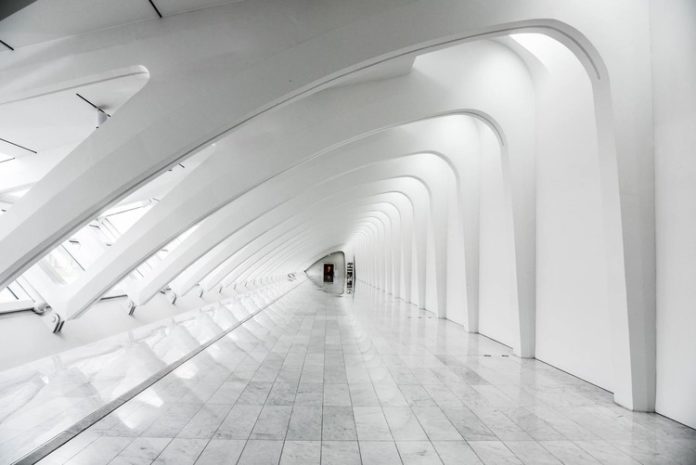Like food and clothing, buildings are essential. Every building, even the most rudimentary, needs a design to be constructed. Architecture is as central to building as farming is to food, and in this era of rapidly advancing technological change farming may offer us valuable lessons.
At last census count there were 233,000 architects in the United States; the 113,000 who are currently licensed represent a 3% increase from last year. In addition there’s a record number of designers who qualify for licensure: more than 5,000 this year, almost the same number as graduates with professional degrees. There is now 1-architect-for-every-2,900 people in the US. A bumper crop, right?
Well, I’d argue that the evolution of farming gives us a clearer picture of our future. In 1900, there were about 76 million people in the US, and six million farmers; almost ten-percent of all Americans farmed. Today there are more than 300 million people in the U.S. and two million farmers.
What happened? Mechanization and technology became central to growing food. The acreage needed to farm has remained pretty much unchanged, even though our population has grown by 400% and the number of farms has gone from 8 million to 2 million. We produce significantly more food from fewer places, using far fewer people.
Technology is miraculous.
This paradigm is likely to be replicated in my profession. By most accounts technology will change architecture in the next generation as much as it has changed farming in the last century. The signs are here, now.
In January, Kermit Baker, the AIA’s economist, in an article titled “How Many Architects Does Our Economy Need?” noted that only 45% of those graduating from architecture school will have a job working in the profession. That number meant more than all of the other statistics cited in the piece.
The following month, Mimi Kirk argued for a revamping of pre-college education to both expose children to the importance of design and to encourage the value of architecture in our culture and education. Nothing wrong with that. But this call was in response to the stat from the Association of Collegiate Schools of Architecture that architecture school enrollment had dropped 10% in the last five years.
If there are not enough jobs available for graduates to work in the profession that their degrees prepared them for, it stands to reason that fewer people would want those degrees. Given the cost, time, and expected return involved, this is a logical response from the marketplace of higher learning.
More daunting, still: neither article dealt with the profound changes that Artificial Intelligence will have on all professions—especially architecture. This development is uncharted territory for our entire world. In architecture, new technologies will inevitably mean that building consumers and contractors will have more ability to bypass architects entirely. Of course, some clients have always prescribed a design and the architects responded to their directives. But now, the next generation of software will respond directly, with even less need for an architect’s input. Data, once coordinated by architects, will be made seamlessly accessible and useful without the cost, pretense and liability of humans, especially those with a design-based education.
Just as tractors, combines, chemicals and genetic engineering have reduced the need for people in farming, the present underemployment of architects that we now accept—the low pay, part time usefulness, and lack of job security—may eventually evolve into a larger number of us becoming desirable because of our humanity.
Despite technological advances, people still love growing food and making buildings. Faster, cheaper, easier solutions, via technology, may minimize the human hand in making things in all aspects of our culture, but the value of the human touch may redefine the range of products and services offered in many areas, including architecture.
In home design, this hands-on ethic has been part of architectural design forever. But as a profession architects have not successfully competed with the cheaper alternatives at every level of residential design. It’s why only 2% of home designs are created by architects. For generations there have been cheaper, quicker stock plans, rote drafted designs, or simply builder-drawn options for housing consumers.
BIM and Revit are just the launching pads for the complete transformation of how buildings are designed and constructed. Technology makes everything faster and more efficient—it gives power for everyone to do more—but it cannot replace humanity.
Proof of that basic truth can be found in food production. I live in New England. The farming industry moved west in the 20th century. Less than 2% of us are now needed to farm here. But some love to grow, and everyone loves to eat. Mammoth farms hundreds, even thousands, of miles away produce huge amounts of cheap food—and yet some idiosyncratic and delicious food is not part of that corporate system, and no one in the supermarket knows who grew it or how it came to be.
It is not surprising artisanal farming has exploded in popularity, creating a sub-culture of farm-to-table dining, farmer’s markets, and Community Supported Agriculture programs, where cooperatives provide seed money, crops are pre-bought, and you buy your food from the people who made it, with a known provenance. It’s sold at a much higher price than Stop and Shop, but there would not be much farming in New England without artisanal farming.
Fast food has calories, so does your grocery bag filled in the supermarket aisles, but there are those who are nourished by the experience of knowing how their food came to be. If technology changes the way architects work, then the emergence of hands-on food production as a viable alternative to mass-produced agribusiness might provide a model for architects moving forward.
Living, breathing architects can offer that human connection in the coming shift. Nothing is more human than building our places, and there may be a place for the artisanal architect in the emerging world of Artificial Intelligence.



